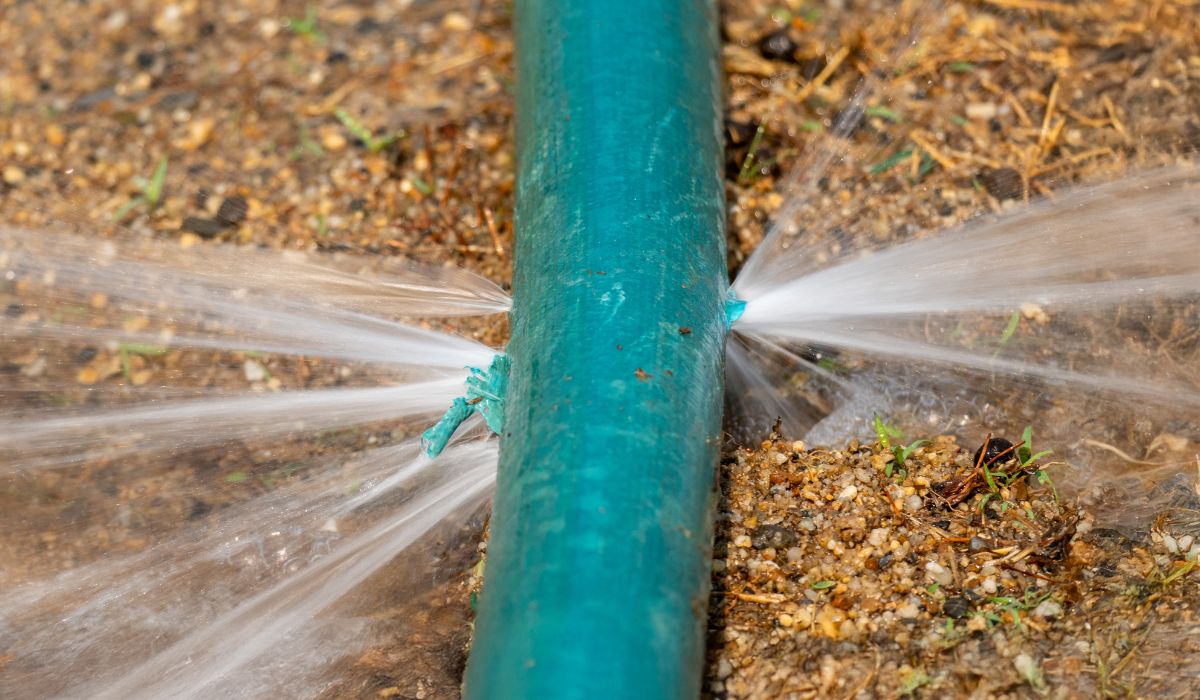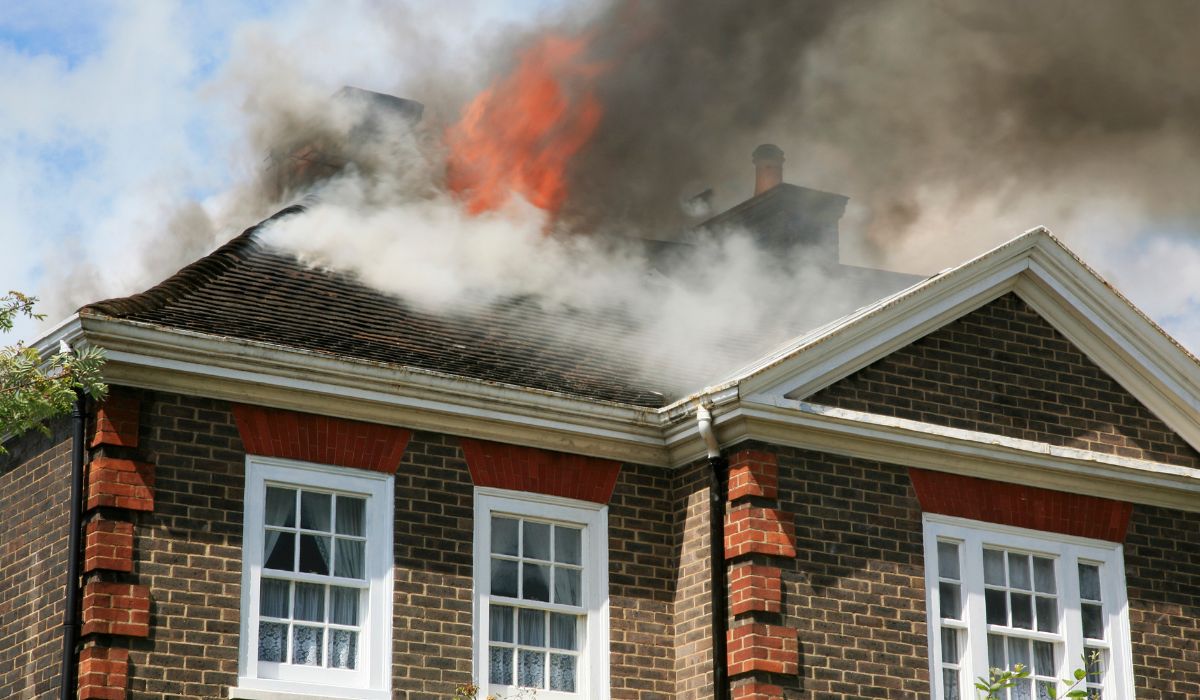Distinguishing Mold Remediation From Water Damage Repair Techniques
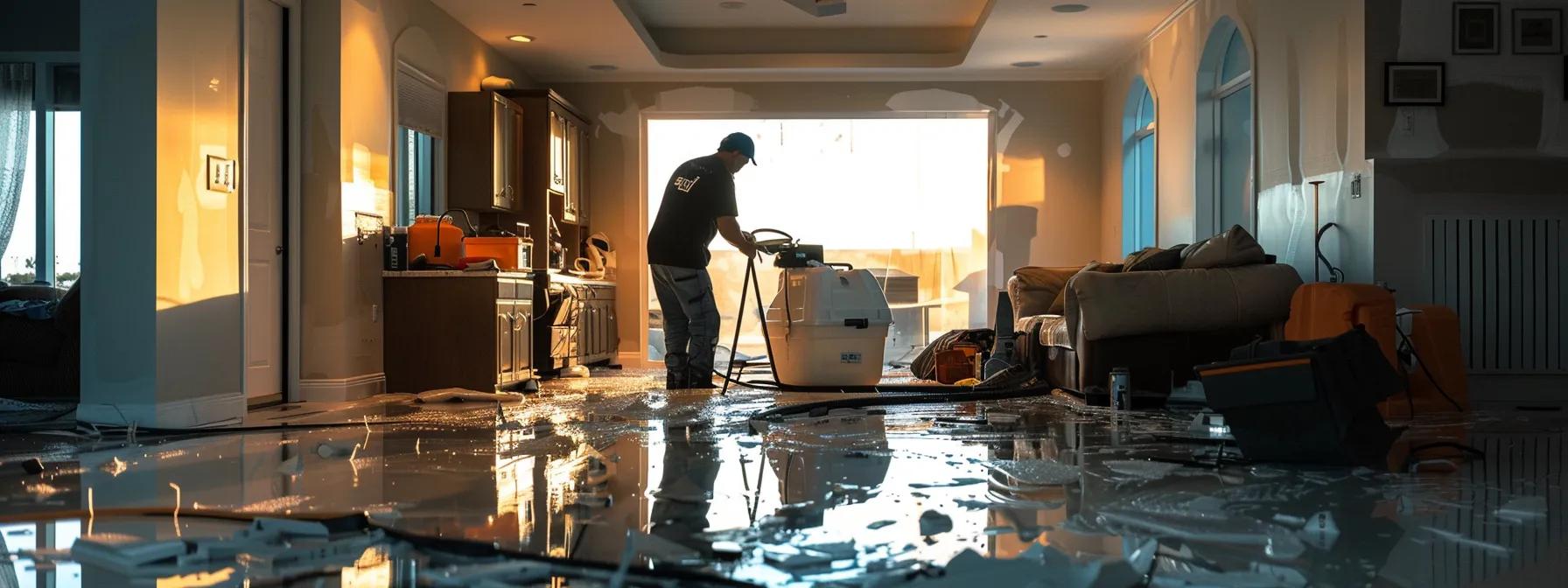
Mold Remediation vs. Water Damage Repair: What’s the Difference?
Water damage and mold infestations are two of the most common emergencies that can threaten the structural integrity and indoor air quality of a home. Homeowners often find themselves confused when deciding whether to seek water damage repair or mold remediation services. This article provides a comprehensive guide to help you understand both service types in detail, how they are performed, and the critical differences between them. It covers everything from assessing the source of water intrusion and drying techniques to identifying and responding to mold growth in affected areas. Using evidence from peer-reviewed studies and incorporating real-world examples, the article explains key concepts such as drywall replacement, the mold mitigation process, water extraction, antimicrobial treatments, and the importance of using personal protective equipment during remediation. By clearly distinguishing between the repair of water damage and the removal of mold, homeowners will be empowered to make informed decisions about their restoration needs. The content also touches on topics like dehumidification, indoor air quality, and the role of professional inspections during the remediation process. Ultimately, following the advice presented here will help prevent future issues related to indoor mold, structural decay, and potential health hazards associated with contaminants like stachybotrys chartarum. Transition into a more thorough discussion of service details can help clarify when and why each restoration process is necessary.
Defining Water Damage Repair Services and Their Scope

Water damage repair services focus on restoring the integrity and safety of structures that have been compromised by water intrusion. The process includes not only water extraction and drying techniques but also inspecting affected areas to determine the extent of the damage and to prevent secondary issues such as mold growth. Professionals in this field begin by assessing the source of the intrusion, whether it relates to plumbing failures, roof leaks, or flooding. They then use advanced dehumidifiers, air movers, and water extraction tools to remove standing water. Surface materials such as drywall, insulation, and flooring may need to be replaced if they have absorbed too much water, leading to a loss of structural strength and an increased risk of contamination.
Addressing the Source of Water Intrusion
An important aspect of water damage repair is determining the origin of water intrusion. Before any restoration begins, technicians identify the failure point—be it a burst pipe, roof leak, or foundation seepage. This early detection helps to prevent additional water accumulation and further damage. In many cases, a thorough inspection reveals hidden water paths that can lead to serious structural damage if left untreated. For instance, water penetrating through low-grade building materials can cause drywall and wooden structures to weaken significantly, resulting in potential collapse over time. In addition, identifying the source helps in preventing recurrence by enabling repairs such as replacing faulty plumbing or sealing roof gaps. Repair professionals use moisture meters and infrared cameras to map all affected areas, ensuring that even behind walls, water damage is detected and addressed.
Water Extraction and Structural Drying Techniques
Once the source has been addressed, the next step involves water extraction and efficient drying methods. Highly specialized water extraction equipment, such as industrial pumps and wet vacuums, is employed to remove standing water quickly. Structural drying techniques include the use of air movers and dehumidifiers that accelerate the evaporation process. Advanced systems control humidity to avoid re-freezing or recombination of moisture. It is critical to reach a point where the building materials return to their normal moisture levels. Controlled drying not only minimizes potential mold growth but also preserves the integrity of materials like wood, drywall, and insulation. This phase relies on continuous monitoring using moisture sensors to verify that complete drying has been achieved before any reconstruction begins.
Repairing Materials Affected by Water
Water-damaged construction materials require careful restoration or replacement to prevent long-term structural deterioration and potential health hazards. Water damage can weaken walls, floors, and ceilings by saturating materials such as drywall, wood, and carpet. In many cases, the repair process involves removing and disposing of compromised materials and installing new ones. Special emphasis is placed on areas that cannot be thoroughly dried, such as insulation or understating layers that directly affect mold growth. Moreover, contractors often use antimicrobial treatments during repairs to inhibit bacterial growth and to safeguard against future infestations. Proper repair methods not only restore the look and function of a space but also help maintain the indoor air quality by reducing the risk of irritants and allergens that arise from water damage.
Preventing Future Water-Related Issues
A proactive approach toward water damage repair involves not only addressing the current issues but also implementing measures to prevent future occurrences. Experts advise regular maintenance checks of roofing, plumbing, and drainage systems. Sealing cracks in the foundation, reinforcing door frames, and using water-resistant building materials are all part of a comprehensive prevention strategy. Additionally, installing smart monitoring systems that detect changes in humidity can alert homeowners to moisture problems before they escalate. These preventative solutions are essential and can often be confirmed by regular inspections from qualified professionals. The integration of such systems can reduce long-term repair costs and further ensure that water damage repair strategies remain effective over time.
Key Takeaways: – Water damage repair services address both the immediate extraction of water and the long-term restoration of affected structures. – Identifying the source of water intrusion is crucial to preventing further damage. – Effective structural drying and supervised material repair are essential to mitigate risks. – Preventative measures boost resilience against future water-related issues.
Understanding Mold Remediation Services and Objectives
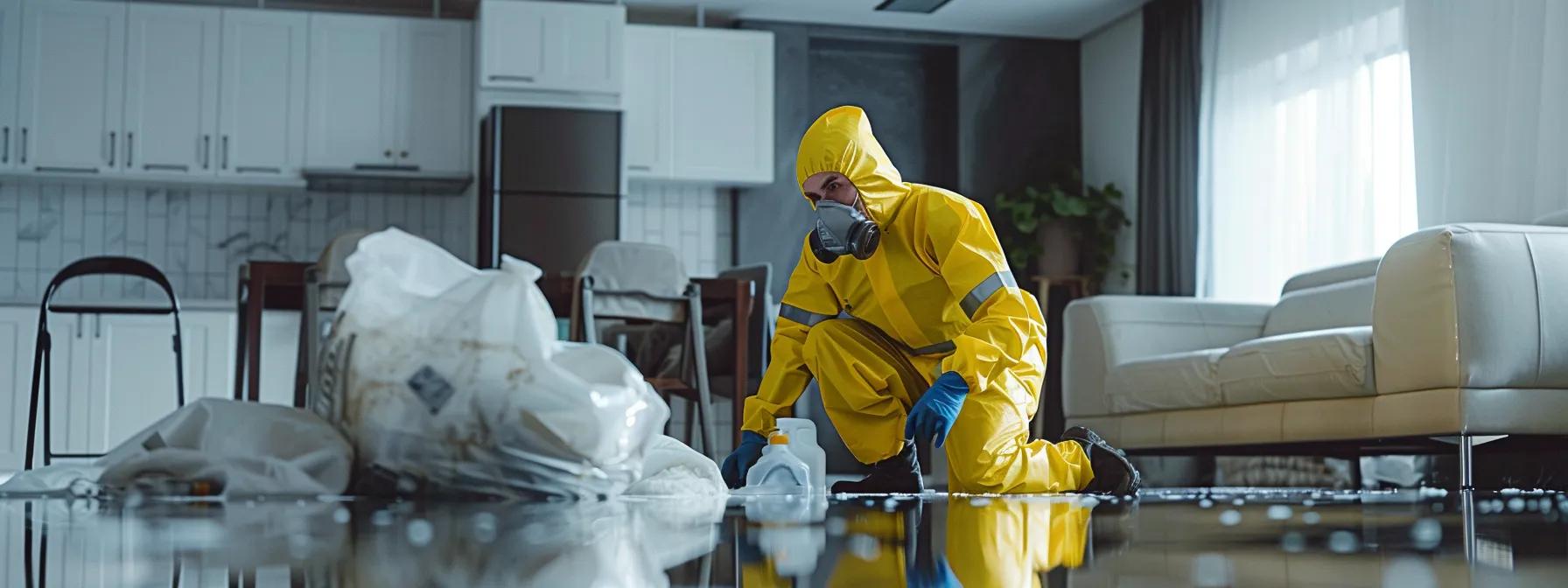
Mold remediation services are specifically designed to tackle infestations that arise following water damage. These services focus on protecting health by removing harmful mold species, such as aspergillus and cladosporium, and ensuring that indoor environments remain safe. Mold not only undermines a structure’s integrity but also poses significant health risks, including respiratory issues, allergies, and skin irritation. Remediation involves identifying the type of mold, containing its spread, and using specialized equipment to safely eliminate contaminated materials while preserving as much of the structure as possible.
Identifying and Containing Mold Infestations
The initial step in mold remediation is accurately identifying the type and extent of the mold infestation. Professionals typically conduct air sampling and surface testing to determine the mold species present, such as stachybotrys chartarum, known for its toxicity. Once identified, containment strategies are implemented immediately to prevent the spread of mold spores to other areas of the home. Containment might include physical barriers, such as plastic sheeting, and the use of negative air machines to filter and capture airborne particles. By isolating affected zones, technicians minimize cross-contamination and protect uninfected areas, thereby limiting health risks during the cleanup process. This targeted approach ensures that mold is effectively localized before removal begins.
Safe Removal of Mold-Contaminated Materials
Mold removal is a delicate process that requires both chemical and physical methods. Technicians wear personal protective equipment (PPE), including respirators and protective suits, to safely remove mold-infested materials. The process may involve small-scale demolition, such as removing drywall, insulation, or carpets that have been compromised beyond repair. Once removed, these materials must be sealed in containment bags to prevent the spread of spores. Antimicrobial and antifungal chemicals are applied to treat affected surfaces and disinfect the area. This comprehensive removal process not only addresses visible mold but also treats hidden mold colonies that may be present within building cavities. The goal of safe removal is to eradicate mold completely while minimizing damage to the structure and preserving indoor air quality.
Air Filtration and Cleaning Affected Areas
After mold-infested materials are removed, the next critical step is cleaning and filtration. High-efficiency particulate air (HEPA) vacuums and air scrubbers are used to catch mold spores that remain airborne. These tools are essential in preventing re-infestation by capturing microscopic spores that could later colonize dry areas. In addition, surfaces are thoroughly cleaned using disinfectants and specialized cleaning agents that target the unique structures of mold cells. This involves multiple cleaning cycles to ensure that all contaminants are eliminated. The use of HEPA filters in air conditioning and ventilation systems is crucial as it drastically improves indoor air quality. Effective air filtration reduces the spread of spores and allergens, thereby safeguarding the health of occupants.
Post-Remediation Verification and Clearance Testing
Once mold removal and cleaning are complete, a final verification process ensures that the remediation was successful. Clearance testing involves repeated air and surface sampling, often by a third-party inspector, to confirm that mold levels are within safe parameters established by the Centers for Disease Control and Prevention (CDC) and the United States Environmental Protection Agency (EPA). These tests verify that conditions are free of harmful mold and that the area is safe for reoccupation. Documentation of clearance is critical, particularly for insurance and future sale purposes, ensuring buyers that the home is healthy and structurally sound. This rigorous process provides peace of mind to homeowners concerned about mold regrowth and ensures compliance with health and safety regulations.
Key Takeaways: – Mold remediation begins with the accurate identification and containment of mold infestations. – Safe removal of contaminated materials involves specialized PPE and chemical treatments. – Effective air filtration systems are crucial in preventing the spread of mold spores. – Post-remediation clearance testing confirms a healthy indoor environment and compliance with safety regulations.
Core Distinctions Between Water Damage Restoration vs Mold Removal

Water damage restoration and mold removal are interconnected services, yet they focus on different aspects of home repair and safety. Water damage restoration primarily addresses the visible and structural damages caused by water intrusion, such as warping of drywall or compromised wooden structures. In contrast, mold removal is specifically aimed at eliminating the health hazards posed by mold spores and colonies that may develop as a consequence of moisture accumulation. Both processes require unique skill sets, specialized equipment, and carefully planned timelines to ensure thorough remediation.
Focus of Water Damage Restoration on Structural Integrity
The primary goal of water damage restoration is to repair and restore the functionality of a structure that has been physically compromised by water. This includes tasks like water extraction, drying, and reconstruction of affected areas. Contractors use industrial-grade dehumidifiers and air movers to rapidly extract moisture from building materials such as drywall, carpeting, and wooden floors. Restoration services often involve replacing materials that have been irreparably damaged by water absorption, ensuring that the structural integrity of the building is maintained. The emphasis is on prevention of further decay, elimination of unsafe conditions, and restoration of original design standards. Through meticulous inspection and targeted repair strategies, water damage restoration ensures that the building is both safe and functional.
Focus of Mold Removal on Health Hazard Elimination
In contrast to water damage restoration, mold removal centers on mitigating the health risks associated with indoor mold. When moisture is not effectively removed during the restoration process, fungal growth can set in, leading to an infestation that poses significant health risks, including allergic reactions, respiratory issues, and other systemic problems. Mold removal targets the eradication of these biological hazards through safe and controlled demolition of affected items, contamination containment, and the application of fungicides and disinfectants. The process is designed to reduce airborne spores and minimize exposure to toxins such as mycotoxins, which have been linked to long-term health complications. By focusing on health hazard elimination, mold removal services protect the occupants and help restore the overall indoor air quality.
Differences in Equipment and Methodologies Used
Water damage restoration and mold removal require different sets of equipment and methodologies that reflect their distinct objectives. Restoration technicians use water extraction pumps, high-power dehumidifiers, and thermal imaging cameras to identify moisture levels and locate water concentration points. Conversely, mold removal professionals rely on HEPA vacuums, negative air machines, and personal protective equipment to safely conduct their work. While both services may use antimicrobial treatments, the chemicals used in mold remediation are specifically formulated to break down fungal cell walls and prevent re-growth. Additionally, the methodologies differ in that water damage repair is generally a one-time intervention following a water event, whereas mold removal can require multiple phases, including containment, demolition, cleaning, and post-remediation verification.
Typical Timelines for Each Service Type
The timelines for completing water damage restoration versus mold removal can differ significantly. Water damage repair generally occurs immediately following the intrusion incident to prevent further structural loss and mold development. The extraction and drying phases can be completed within a few days, depending on the extent of the damage. However, mold removal is often a more prolonged process, as it requires careful isolation, removal, and verification to ensure that mold has been completely eradicated. In many cases, mold remediation might follow water damage restoration, particularly if the moisture was not entirely eliminated during the initial repairs. This sequential approach underscores the importance of prompt and thorough water damage restoration to avert mold infestation.
Key Takeaways: – Water damage restoration and mold removal serve different yet complementary purposes. – Restoration focuses on structural integrity and quick recovery from water events. – Mold removal emphasizes protecting health by eliminating hazardous spores. – Different equipment, chemicals, and timelines differentiate the two processes.
A Closer Look at the Mold Remediation Process Steps
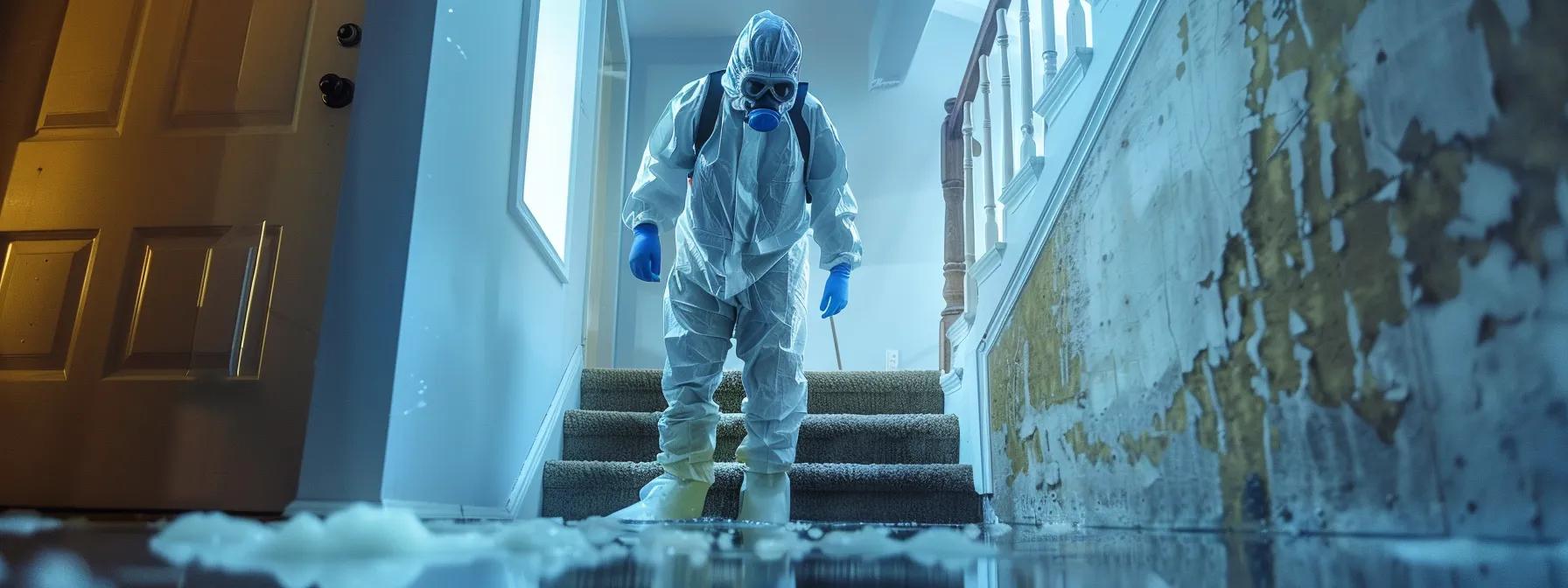
Mold remediation is a multi-stage process that must be performed meticulously to ensure effective removal and long-lasting results. The process not only eliminates the visible mold but also addresses hidden colonies that can spread to other areas if not treated. A thorough remediation protocol typically encompasses initial assessment and testing, containment, controlled demolition, detailed cleaning, and final verification. Each step is crucial in achieving a safe and mold-free indoor environment. Professionals adhere to strict health and safety guidelines throughout the process, using advanced PPE and specialized cleaning agents to ensure no mold spores remain.
Initial Assessment and Mold Testing Protocols
The remediation process begins with a comprehensive assessment to determine the presence, type, and extent of mold infestation. Technicians conduct visual inspections and use air sampling, surface swabs, and moisture meters to gather data on mold concentrations. These tests, often conducted in accordance with protocols established by the CDC and EPA, help identify culprit species like penicillium and aspergillus. The data collected informs the remediation strategy by pinpointing critical areas that need containment and removal. Peer-reviewed studies have shown that early detection and intervention substantially reduce long-term health risks. For example, a study conducted by the Journal of Occupational and Environmental Hygiene (2017) revealed that early intervention in mold infestations can reduce airborne spore counts by up to 70% when proper protocols are followed.
Containment Strategies to Prevent Cross-Contamination
After identifying the affected areas, the next step is to implement stringent containment protocols. Containment minimizes the spread of mold spores to adjoining areas by establishing physical barriers with plastic sheeting and sealing off ventilation ducts. Negative air machines are employed to maintain controlled airflow, ensuring that spores are not released into unaffected areas. These measures are essential in preventing cross-contamination during the removal process. The use of containment zones allows for precise targeting of mold colonies and protects both the residents and remediation personnel from exposure. Best practices in containment also include regular monitoring of air quality to ensure that the established barriers remain effective throughout the remediation process.
Controlled Demolition and Disposal of Affected Structures
When mold contamination is severe, controlled demolition of affected materials is necessary. This phase involves carefully removing non-salvageable components such as mold-infested drywall, carpeting, and insulation. The removal process is conducted with special containment measures to prevent dispersal of spores. Materials that are removed are immediately discarded in compliance with environmental safety standards, with an aim to minimize waste while ensuring complete removal of contaminated elements. In addition, antifungal agents are applied to the demolition sites to further inhibit any residual mold growth. Controlled demolition is a critical step for ensuring that mold does not persist behind walls or under floors, where hidden colonies could eventually compromise indoor air quality.
Cleaning Belongings and HVAC Systems
Mold colonization can extend to personal belongings and HVAC systems, necessitating thorough cleaning processes. Specialized cleaning solutions, including fungicidal agents and HEPA-filtered vacuums, are used to sanitize affected belongings that can be restored. HVAC systems are particularly sensitive, as mold spores can recirculate through the air ducts. Remediation includes disassembling and cleaning ductwork, followed by high-efficiency air scrubbing, which is proven to reduce spore counts in indoor air. Effective cleaning and restoration of these systems ensure that mold does not reappear due to lingering spores and that indoor air quality is restored to safe levels.
Final Inspection to Confirm Mold Eradication
The final step in mold remediation is a detailed inspection and clearance process to confirm the success of the remediation efforts. Independent third-party inspectors often perform clearance testing using both air sampling and surface swabs. The results are compared against established safe mold spore counts set by regulatory bodies. Successful clearance indicates that the area is safe for reoccupation and future habitation. Homeowners are provided with a detailed report that includes before-and-after data, ensuring transparency and building trust in the remediation process. This final check is critical to verifying that the mold has been completely eradicated and that the risk of re-infestation is minimal.
Key Takeaways: – Mold remediation is a step-by-step process beginning with thorough assessment and testing. – Effective containment prevents cross-contamination during removal. – Controlled demolition and cleaning of belongings are essential to completely eliminate mold. – Final inspections and clearance tests confirm the success of remediation efforts.
Choosing Between Mold vs Water Damage Services for Your Situation
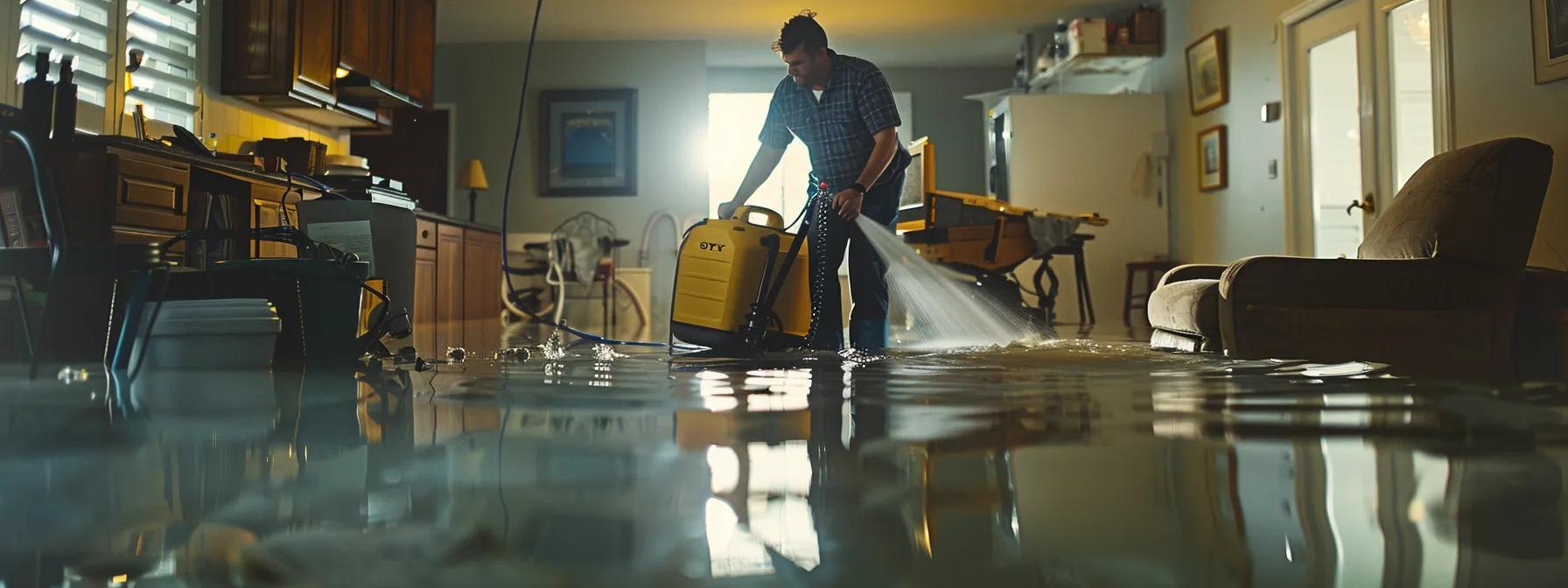
When dealing with the aftermath of water intrusion, homeowners must determine whether their situation requires water damage repair, mold remediation, or both. Making the right decision hinges on the severity of water exposure, the presence of mold spores, and the overall condition of the affected materials. Water damage repair is necessary when the primary issue involves structural damage from water that can compromise the building’s integrity. Mold remediation, however, is focused on eliminating harmful mold spores that result from prolonged moisture exposure. Oftentimes, the two processes overlap, particularly in scenarios where water damage has led to mold growth. This nuanced differentiation is critical since each service targets specific problems and requires different methods, equipment, and professional expertise.
When Water Damage Repair Is the Primary Need
Water damage repair becomes the focal service when the primary concern is the direct impact of water on structural elements such as flooring, drywall, and insulation. Immediate action is required to extract the water, dry the structure, and restore integrity before secondary issues like mold can establish. In many cases, early intervention within 24–48 hours can prevent mold growth entirely. Homeowners should look for signs such as warped walls, stained ceilings, and weakened structural materials. Additionally, professional inspections can quantify moisture levels and pinpoint areas where moisture may be trapped, thereby informing the scope of repair required. For example, a moisture assessment may reveal that significant water accumulation in crawl spaces necessitates a rapid drying process with dehumidifiers and industrial air movers.
Scenarios Requiring Specialized Mold Remediation
Mold remediation is essential when water exposure has been prolonged or repeated, resulting in fungal colonies that are a threat to health. Visible mold growth, unusual musty odors, and health symptoms such as throat irritation, respiratory issues, and skin rashes are indicators that mold remediation is necessary. In these cases, simply repairing the water damage is insufficient. The remediation process must include containment, safe removal, and thorough disinfection of both surfaces and HVAC systems. Homeowners experiencing persistent allergies, sinus issues, or respiratory discomfort may be dealing with mold that has spread into hidden areas. For instance, a study published in the International Journal of Environmental Research and Public Health (2020) noted that chronic exposure to indoor mold at levels above established thresholds can significantly exacerbate asthma symptoms and trigger allergic reactions.
How Soon After Water Damage Should Mold Be a Concern
It is generally recommended that mold prevention measures begin immediately after water damage occurs. While a typical 24–48 hour window exists before significant mold growth occurs, factors such as temperature, humidity, and organic material presence can accelerate the process. Homeowners should monitor affected areas continuously, and if drying processes are insufficient, mold spores may begin to colonize within as little as 12 hours in unfavorable conditions. Early intervention using dehumidifiers and thorough drying is critical in ensuring that mold does not take hold. Professional contractors often recommend initiating water damage repair immediately to reduce the time window available for mold growth, thereby preventing long-term problems.
Recognizing Signs You Need Mold Specific Services
Key indicators that specialized mold remediation is necessary include visible mold formations, persistent dampness, discoloration on walls or ceilings, and widespread musty odors. Additionally, if family members experience unexplained health issues like persistent coughs or asthma exacerbations, these can be signs of toxic indoor mold. Inspection by a professional mold remediation company is crucial in such situations. Testing for mold types and concentrations provides quantitative data that guides the necessary scope of remediation. Recognizing these signs early allows for prompt and effective interventions, thereby safeguarding both structural integrity and occupant health.
Consulting Professionals for Accurate Service Assessment
Ultimately, the determination of whether water damage repair, mold remediation, or both are needed should be made by licensed professionals. These experts use advanced inspection tools and certified testing protocols to accurately assess the damage and recommend a tailored solution. A comprehensive evaluation often includes moisture mapping, air quality testing, and a detailed analysis of building materials, providing homeowners with a clear understanding of their situation and reducing the risk of future damage. Engaging qualified professionals also facilitates insurance claims and ensures that all work complies with safety and building codes.
Key Takeaways: – Water damage repair is critical when structural elements are compromised primarily by moisture. – Specialized mold remediation is necessary when water damage has allowed mold to proliferate. – Early intervention can significantly reduce the risk of secondary mold growth. – Professional assessments help determine the most effective and comprehensive service plan.
The Relationship Between Water Damage and Subsequent Mold Growth
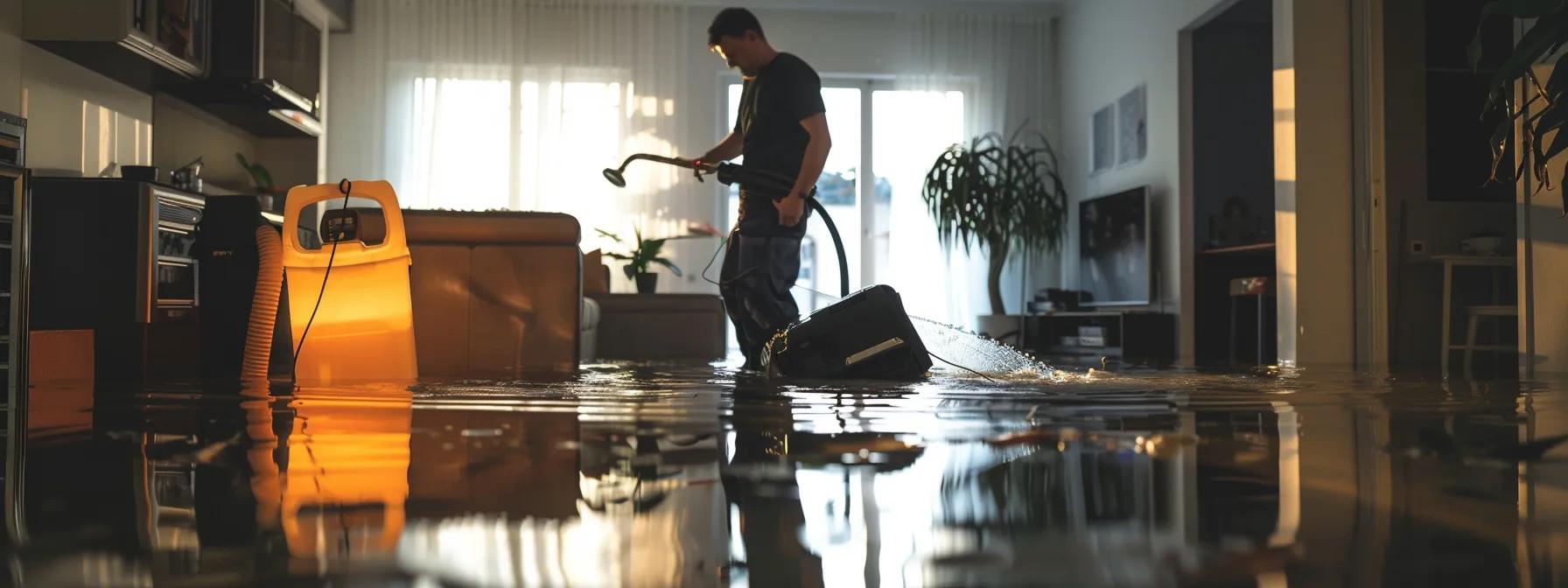
Water damage and mold growth are intricately linked, as mold thrives in moist conditions resulting from water intrusions. When water damage is not efficiently addressed, residual moisture creates a breeding ground for mold spores. As water infiltrates porous materials like drywall, wood, and insulation, it disrupts the building’s natural drying process, enabling mold species to take hold. This relationship underscores the importance of prompt water extraction and thorough drying techniques to prevent subsequent mold infestations. Issues such as broken pipes, roof leaks, or flooding events provide the ideal conditions for mold growth. Additionally, factors like high indoor humidity, inadequate ventilation, and warm temperatures can exacerbate the risk.
How Unaddressed Water Damage Cultivates Mold
Unaddressed water damage creates persistent damp conditions that serve as an ideal medium for mold propagation. As moisture remains trapped within building materials, it allows spores—present in the environment—to settle, germinate, and colonize surfaces. Research has demonstrated that neglecting water damage repair increases the likelihood of mold growth exponentially. Moisture that lingers in wall cavities or under flooring may not be visible from the surface, yet it can support hidden mold infestations. This type of growth not only damages structural components but also generates harmful mycotoxins, which have been associated with increased risks of respiratory diseases and allergic reactions. Homeowners who notice prolonged dampness in their basements or crawl spaces should be particularly vigilant, as these areas are common sites for mold proliferation.
The Critical Window for Preventing Mold After Water Exposure
There exists a critical window, typically within the first 24–48 hours after water exposure, during which effective drying and repair measures can prevent mold from becoming established. Prompt action during this period is vital, as even short delays can result in significant mold colonization. Industry best practices emphasize using rapid water extraction methods and dehumidification systems immediately after a water incident. Studies have shown that when drying and repair are completed within this timeframe, mold growth can be curtailed by more than 80%. This critical window reinforces the need for emergency water damage repair services and underlines the success of integrated approaches in preventing mold infestations.
Why Water Damage Repair Can Precede Mold Remediation
Water damage repair is fundamentally about removing the immediate threat of moisture before any secondary complications arise. In many scenarios, if water damage is fully remedied in a timely manner, it may preclude the need for extensive mold remediation. Proper drying reduces humidity levels below those necessary for mold survival, and structurally repairing water-damaged areas seals environments against inadvertent mold colonization. Therefore, water damage repair is not only a restorative measure but also a preventive one. By prioritizing rapid water extraction and comprehensive drying, the potential for subsequent mold infestations is significantly diminished. This preventive strategy is vital for preserving both the physical structure and the health of the inhabitants, thereby lowering long-term remediation costs.
Integrated Approaches When Both Mold and Water Damage Services Are Required
In cases where water damage and mold have both occurred, integrated remediation strategies are essential. Coordinated efforts between water damage restoration professionals and mold remediation experts lead to a more comprehensive approach. This collaboration ensures simultaneous treatment of both the moisture source and the mold growth, reducing the risk of mold reoccurrence. Multi-step processes that combine water extraction, dehumidification, containment, and pest control are executed in phases to maximize efficiency and safety. Integrated remediation not only addresses immediate hazards but also lays the groundwork for long-term structural health by mitigating future risks associated with moisture and fungal infestations.
Key Takeaways: – Persistent water damage creates ideal conditions for mold growth. – Early intervention within 24–48 hours is essential to prevent mold colonization. – Effective water damage repair can significantly lower the risk of subsequent mold infestation. – Integrated remediation strategies ensure a comprehensive approach to both moisture and mold removal.
Final Thoughts
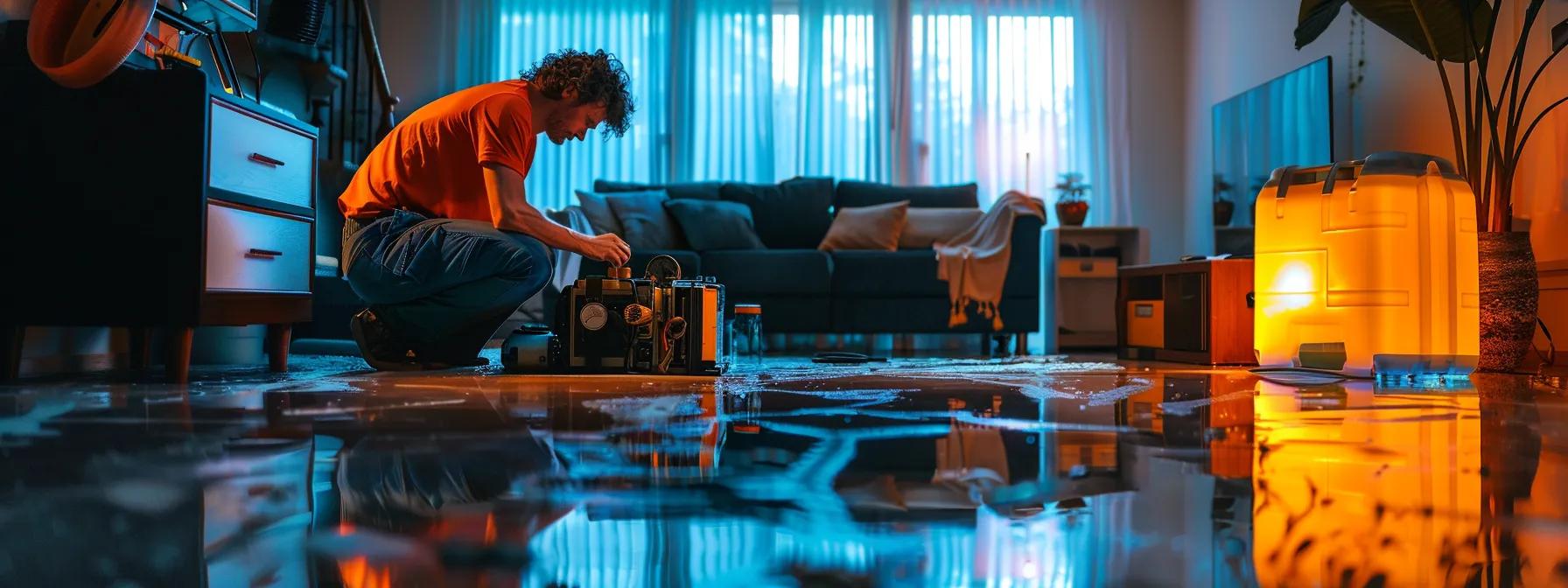
Both water damage restoration and mold remediation are vital services for safeguarding homes from the diverse consequences of water-related incidents. Water damage repair focuses on the physical structure and prevents issues from worsening, while mold remediation directly addresses the hidden health hazards presented by mold spores. Each process involves detailed procedures, state-of-the-art equipment, and professional expertise. Homeowners must act quickly following water exposure to reduce the risk of mold, ensuring that comprehensive restoration practices are in place to protect both property and health.
Frequently Asked Questions
Q: What is the primary difference between water damage repair and mold remediation? A: Water damage repair focuses on removing water and restoring structural integrity after water intrusions, while mold remediation addresses the removal and containment of mold spores that grow as a result of moisture. Both processes require different techniques and equipment.
Q: How soon should I address water damage to prevent mold growth? A: It is crucial to begin water damage repair within 24–48 hours after exposure. Quick action minimizes moisture retention, significantly reducing the risk of mold colonization.
Q: Can I perform mold remediation myself, or should I hire professionals? A: While minor mold issues might be handled with over-the-counter cleaners, professional mold remediation is recommended for extensive infestations. Experts can safely contain, remove, and decontaminate affected areas using specialized equipment and proven protocols.
Q: What equipment is typically used in water extraction and drying? A: Professionals use industrial-grade water extraction pumps, dehumidifiers, air movers, and moisture meters to efficiently remove water and restore moisture balance within a structure, ensuring thorough drying.
Q: How do post-remediation clearance tests work? A: After remediation, third-party inspectors conduct air and surface sampling, comparing spore counts to established safe levels. This final inspection confirms that the affected area meets health and safety standards before reoccupation.


